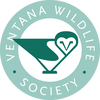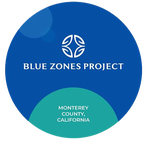|
|
12/12/23 CONDORS RELEASE
We release the last 4 condors as second grade students share their condor artwork and have questions for the Condor Crew. Special guests include Chris West, Yurok Condor Restoration Program Manager, and Alacia Welch, Condor Program Manager at Pinnacles National Park. |
|
|
11/28/23 CONDORS RELEASE
The Condor Crew released to the wild at San Simeon, CA, six of the 10 captive raised condors. We were also joined by a middle school class at La Paz Middle School whose students had some questions for the Condor Crew. Plus, catch a sneak peak of some of our favorite clips from our upcoming documentary film, Condor Canyon and more! |
|
|
11/5/22 CONDOR RELEASE
San Simeon, CA November 5, 2022 Joe and the Condor Crew provide engaging commentary, beautiful photos, and fun videos. For the first time in our history of condor releases, a condor flies out as soon as the doors open! Stay tuned-in after Joe signs-out for bonus footage of the 2022 condor rookies leaving the pen. |
|
|
12/4/21 CONDOR RELEASE
Iniko (1031) was released back to the wild along with Dian Fossey (1011) and Rachel Carson (1042). Dian was the first to make the move to leave the pen followed by Iniko who quickly displayed dominance over the carcass. Recorded December 4, 2021 |
|
|
11/2/21 CONDOR RELEASE
Condor Joe and the crew hosted a dual camera live release of three young female condors; Jane Goodall (1019), Jan Hamber (1038), and Rosalie Barrow Edge(1036). Jane was the first to exit and with Rosa and Jan squeezung out just before we signed off. Recorded November 2, 2021 |
|
|
12/12/20 CONDOR RELEASE
Condor Joe gave a detailed play by play as the remaining five condors were released in San Simeon. Recorded December 12, 2020 |
|
|
11/19/20 CONDOR RELEASE
Condor Joe gave a detailed play by play as two of four condors fledged in San Simeon. View the rest of the cohort still in the release pen. Recorded November 19, 2020 |





